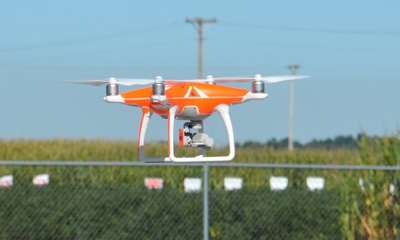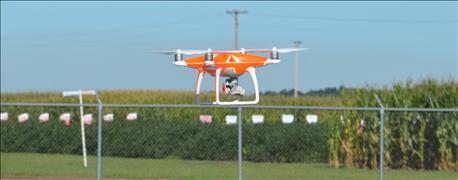
Long-awaited rules from the Federal Aviation Administration that provide an avenue for flying unmanned aerial vehicles for scouting and other commercial purposes in agriculture are finally here. Expect this to fuel a whole new wave of interest in UAVs before the next growing season.
“You don’t mess with the FAA," advises Chad Colby, a self-taught UAV expert who is also general manager of Central Illinois Ag, a Case IH dealer in Atlanta, Ill. To emphasize his point, he compares it to dealing with the IRS.
“Violate their rules and you can usually resolve it by paying money due and a fine,” Colby says. “Fail to comply with FAA rules and the consequences can be much more serious.”

FAA ISSUES RULES: Long-awaited rules that allow the ag industry to use UAVs for scouting purposes legally are finally here. The rules are spelled out in a document called Part 107.
One farmer who is a private pilot says he’s been extremely careful with what he has done with UAVs so far. Why? He doesn’t want to jeopardize losing his regular pilot’s license. The FAA has the authority to revoke it if it deems the action appropriate. Mess up on one and you could lose the other, the farmer says.
Here are things you need to know if you want to use UAVs to collect data for decision-making or you want to charge someone else to do so.
Part 107 provides an avenue to scout with a UAV legally.
The new rules aren’t that much different than what hobbyists have been doing, with a height restriction on how high you can fly, Colby says. “What’s different is there is a lot more detail in these rules,” he says. “The FAA takes protecting the airspace seriously. What you need to study and be aware of if you’re going to fly UAVs in ag is a pretty thick document."
You must pass a test to obtain an operator’s license.
You will be able to take a test to obtain an operator’s license to fly UAVs from the FAA, Colby says. Once you pass the test, you will receive the operator’s license. You will no longer have to be a licensed private pilot to fly a drone legally for commercial agriculture as long as you have the operator’s license specifically designed for this purpose.
A Section 333 permit is no longer your only recourse.
If you wanted to scout fields and use the data for decision-making in the past, you needed to apply for a Section 333 permit from the FAA, Colby says. Some were granted, but it wasn’t a particularly simple process. Some people were flying and even doing things for money for other people without these permits. “They were really taking a chance,” Colby says. “This isn’t a place where you want to take chances.
“Maybe you got by with it," he says. "My analogy goes like this. I could head west on Interstate 74 toward my home, speeding at 100 miles per hour. I might get a good ways. But sooner or later, likely around Champaign, Ill., for example, odds are I would get caught. It’s not worth it in that case, and it’s certainly not worth it dealing with the FAA. Their job is to take airspace seriously.”
Understand the definition of "commercial use" under FAA rules.
If you are going to use a UAV for commercial purposes, you will need to comply with the new FAA rules, as spelled out in Part 107. “The definition of ‘commercial use’ is really pretty simple,” Colby says. “If you are flying a drone or someone is flying it for you to collect data to make decisions for a commercial enterprise, then it’s a commercial use. Before, you needed a Section 333 permit. Now you can do it by passing a test and obtaining an operator’s license for UAVs from the FAA.”
About the Author(s)
You May Also Like




